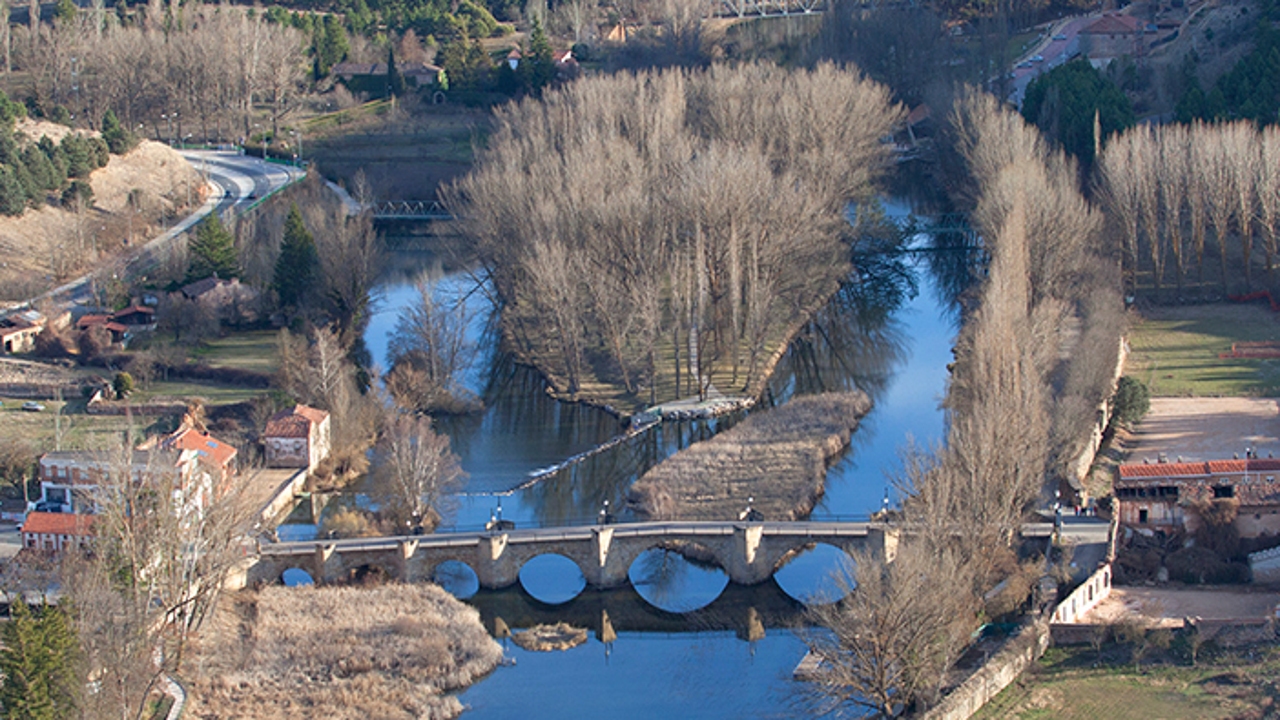One of the main natural resources of Spain is Douro River. Their 897 kilometers long. with which it has, 572 in Spain and 213 in Portugal, makes it have numerous environmental, cultural and heritage attractions. Its about most important river in the northwest of the Iberian Peninsula. It is born on the southern slope of Urbión peakabout 2160 meters above sea level, and It flows into the Atlantic Ocean, in the Porto estuary.
It has the largest hydrographic basin in the Iberian Peninsula, occupying 98,073 km², of which 78,859 km² correspond to Spanish territory and 19,214 km² to Portuguese territory. The Spanish part iIncludes territories of the autonomous communities of Castilla y León, Galicia, Cantabria, La Rioja, Castilla-La Mancha, Extremadura and the Community of Madrid, although somewhat more than 98 percent of the surface corresponds to Castilla y León, community in which it stands out for its cereal crops, as well as for the production of high quality wines, highlighting, above all for its fame, those of the Ribera del Duero designation of origin.
To discover the treasures of this area there is a tour, which has become one of the most important cultural hubs in southern Europe. It occupies a prominent place at the historical crossroads of the Peninsula. It became a border line in the Reconquistahence part of its historical artistic complexes, including the construction of a good number of castles and large monasteries, have conditioned the future of the towns that embrace it.
Its route allows the traveler to cross natural spaces created by the natural action of its course and converted into environmental and fauna reserves of great importance. At the same time, The Duero irrigates the vineyards of the most famous wine regions in southern Europe and it is the ideal setting for water tourism activities with river cruises and sports in the numerous reservoirs built along its riverbed.
Of Castilla y León covers five provinces: Soria, Burgos, Valladolid, Zamora and Salamanca. In the province of Soria, the Duero begins its journey in Duruelo de la Sierrawhere its stone architecture stands out, passing by the pine houses of Vinuesa, next to the Urbión and Cebollera mountain ranges. From Cidones follow the river through Garrayinviting you to practice water sports, crosses the capital of Soria and continues its course through the Sierra de las Perdices, the historic towns of Almazán and Berlanga de Duero, and the imposing castle of San Esteban de Gormaz.
At the height of La Vid, the Duero enters the lands of Burgos of the Ribera del Duero Denomination, bastion of red wines from Castilla y León. Peñaranda de Duero discover its history to the traveler who arrives at villas of Zazuar or Vadocondes, where the Duero has marked its economic and demographic growth. After knowing the underground wineries and winepresses of Fresnillo de las Dueñasthe road continues to the capital of Burgos, Aranda de Duero and the historic Roa, among other.
He Duero riverbed overlooks Valladolid's Cuco Valley and enter the town of Valdearcos de la Vega, crosses Bocos de Duerofrom where you can admire an impressive panoramic view of the entire valley, and Curiel de Duero, with its two castles. In the path, Pesquera or Valbuena de Dueroas well as Olivares and Sardón de Duero They enjoy a monumental wealth in which wine is the undisputed protagonist, and the historic towns of Simancas or Tordesillas.
The fertile plain of Zamora de Toro, capital of the wines that bear its name, has a numerous group of vineyards spread across its slopes alongside the mighty Duero. AND Fresno de la Ribera manages to impress with its beautiful landscape before reaching the capital Zamorana, known as 'the City of Romanesque'before heading to the pottery town of Pereruelathe cattle town of Bermillo de Sayago or Fermosellelocated in the middle Arribes del Duero Natural Park.
The Arribes
He Los Arribes del Duero Natural Park is located west of Zamora and Salamanca, where the deep incisions of the Duero River are the natural border between Spain and Portugal, dividing an area with identical characteristics between both countries. The Duero and its tributaries are the common element and connecting link of an entire territory that extends linearly over more than 120 kilometers.
Its territory is a protected natural space to preserve the level of conservation of its natural ecosystems and landscape values in harmony with traditional uses, rights and exploitations and with the implementation of compatible educational, scientific, cultural, recreational, tourist or socioeconomic activities.
The European Union also protects the biodiversity of Arribes through the Natura 2000 Network, through the figures of special conservation area and special protection area for birds and UNESCO recognized in 2015 the level of conservation of genetic resources, species, ecosystems and landscapes of Arribes, including the territory of the natural park within the Iberian Plateau.
Villarino de los Aires is the first town in Salamanca that bathes the Duero and his landscape of deep canyons and rich fauna and vegetation make way for viewpoints that reveal enormous panoramic views that reach Portuguese lands. Between Pereña de la Ribera and Masueco, the Uces River It pours its waters into the Duero, which then reaches Aldeadávila de la Ribera, where its important dam opens the eyes of the traveler before following the course of the river through Mieza, Vilvestre or Saucelle.

